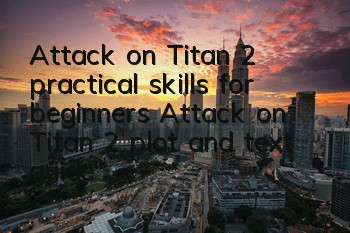"The Auditorre family is not dead yet! I am still here! Me! Egio! Egio Auditorre of Florence!"
From the release of the first "Assassin's Creed" in 2007, this IP has been around for 14 years. The author was also fortunate to come into contact with this series for the first time in 2009, and also watched it go from its first appearance to its fame and its current storm.
(The entire series was not collected, I hope I'll forgive me)
The author also expressed many personal opinions on the current situation of "Assassin's Creed". I also have my own thoughts on the dilemma this series is facing now. However, the author does not want to go deeper, but rather wants to explore some changes in the development of Assassin's Creed from another perspective.
With the release of "Assassin's Creed: Valhalla", the author regains this series again and revisits all the stories of "Assassin's Creed" from "Assassin's Creed 2". In this process, the author also discovered Ubisoft's changes in narrative perspective and techniques, so this article was created. The author wants to form a series through four to five brief analysis, and to explore the story mode of "Assassin's Creed" from a player's perspective.
Young Eagle
Because the narrative technique of the first generation of Assassin's Creed was too simple, the author could not list a single topic for narration. Therefore, the author will start this series with Egio Auditorre, which is familiar to players, and intersperses some descriptions of the initial narrative techniques.
In 2009, "Assassin's Creed 2" was released. While inheriting the advantages of the first generation of Assassin's Creed, it also made its own innovations, laying a very solid foundation for this series.
The story of "Assassin's Creed 2" takes place in the Renaissance, when the young and frivolous playboy Egio Auditorre enjoys his life without worries in Florence. Racing, drinking, picking up girls, fighting and fighting are commonplace for him.
(But to be honest, Christina's modeling in Assassin's Creed 2 is really bad)
Until his father was betrayed, the whole family of men were hung. Egio's carefree life was completely broken, and under the guidance of his father, he obtained the inheritance he should inherit and embarked on a road of revenge.
In terms of subject selection, "Assassin's Creed 2" continues the "historical immersion principle" of the first generation, and leads players to the romantic Renaissance through Animus, which makes "Assassin's Creed 2" full of a strong humanistic atmosphere from the beginning, sweeping away the deep haze of war in the previous work.
Based on this story background, Assassin's Creed 2 tells a profound and romantic story of revenge.
It is not only love that can be called "romantic". The ups and downs and thought-provoking plots can also be called "romantic". Just like "Hamlet", in my opinion, it is also a work full of romance and humanistic feelings.
Revenge is a very common topic and one of the most readily accepted topics by the audience. But to stand out among many similar topics, you need some effort. The advantage of "Assassin's Creed 2" is that it relies on the unique world view of "Assassin's Creed".
The most special thing about the Assassin's Creed series is its dual-line story development in ancient and modern times. Players connect to ancient times through Animus to experience the memories of their predecessors. The ancient ancestors conveyed information to modern descendants through contact with the First Civilization (Yishuren), forming a perfect closed loop.
In the ancient storyline of Assassin's Creed 2, Egio's revenge is a bright line, creating a character who gradually turns from a playboy to an assassin master. Another hidden thread is to expand the "Assassin's Creed Universe" with the "First Civilization" as its core through the "Golden Apple".
Compared with the too simple dialogues of the first generation, "Assassin's Creed 2" has a more mature camera language. At the same time, "Assassin's Creed 2" also used a long enough narrative length to successfully present Egio's first half of his life to players. Compared to Altaïr, Egio's character is more full and more deeply rooted in people's hearts.
In addition to direct narrative, Assassin's Creed 2 also continues to enrich the "Assassin's Creed Universe" through the "collections" method, two of which are Altaire's manuscripts and Assassin's Tomb. Ubisoft uses manuscripts to treat Altaïr as a legacy character and construct a complete Assassin Brotherhood setting without affecting the progress of the main line. The Assassin's Tomb lays the groundwork for the subsequent "Assassin's Creed" series.
(Two of the six ancient tombs, Darius and Amonet have appeared in the subsequent game plot)
And another way of fragmented narrative is "truth". And this is the hidden thread of modern storyline.
Deston was the only modern protagonist until Assassin's Creed 4: Black Flag. About Desmon being caught by Abstergo, browsing the memories of his ancestors through Animus, and how to act as a modern assassin, these are the bright lines of the modern part.
Ubisoft also sets runes and corresponding truth content in Animus through the character "Experimental Subject 16", allowing players to collect and perform simple decryption to understand the truth of the world in the "Assassin's Creed Universe".
This approach not only enriches the gameplay, but also makes the game more than just stealth and combat. At the same time, based on the first generation of Assassin's Creed, the world view composition was expanded, and for the subsequentThe development of the matter has set a foreshadowing.
This practice was successful, and it sparked active discussions among the player group at that time, and countless people were analyzing and interpreting the contents of these truths. When I re-read these materials, I couldn't help but feel that this exquisite craze is very similar to the popular mobile game "Ark of Tomorrow". Both are the screenwriter who does not speak human words, and gives players unlimited imagination through various incredible but reasonable clues. (Not derogatory)
It is this combination of direct narrative and indirect fragmented narrative, and the intersecting modern and ancient stories, which successfully shapes the two protagonists, Egio and Desmon, who span the time and space, which makes "Assassin's Creed 2" a masterpiece in the minds of many people. At the same time, it also laid the foundation for the most typical narrative technique in the subsequent "Assassin's Creed" series: collectible narrative.
But "Assassin's Creed 2" is just the beginning. What really brought "Assassin's Creed" to its peak is the expansion pack after it and the "Legend of Egio" surrounding it.
The flying eagle
After a year, when the popularity of "Assassin's Creed 2" had not completely dissipated, Ubisoft made a strike while the iron was hot and launched the expansion pack "Assassin's Creed: Brotherhood", officially starting to write a legendary story called "Eggio".
From the perspective of the picture, "Brothers" has a more meticulous modeling level, and its two predecessors far surpassed their own picture expression. This evolution has brought the game's restoration of historical buildings to a higher level, and the historical immersion brought by it is also stronger.
(A brief comparison of Christina's modeling makes it easy to see the progress)
From the perspective of gameplay and game content, due to the size limitation, the overall process of "From the Year" is not long, but the elements contained in it are very rich.
In addition to the most basic combat and free running, "Brothers" continues to carry forward the economic system in the previous work, the equipment system and manor system that match it, and gave birth to a new economic system with the core of "rebuilding Rome".
The newly added "Assassin Apprentice" has become the special system of the game and the focus of its original publicity.
Da Vinci's series of missions in the War Gears combines artistic works with level design, leaving a deep impression on players.
The introduction of the killing system has become the core combat system of the series for a long time.
The addition of multiplayer confrontation mode not only expands the modern part of the story, but also makes players' eyes shine.
These micro-innovations based on the original foundation not only enrich the gameplay and gameplay experience, but many of the systems are also produced by the subsequent Assassin's Creed series.The basics of the product. It can be said that if we trace the origin, many elements in the series can be found in "The Brotherhood".
(The earliest "naval battle" in the series appeared)
The strengthening of narrative ability pushed "Brotherhood" to the first peak of the series.
First of all, the more mature film-based mirror-based technique, combined with the upgraded picture quality, increases the player's visual experience and better conveys the lens language.
From the ancient part of the story, "Brotherhood" put aside the revenge scenes in "Assassin's Creed 2" and shifted its focus to "understanding and application of Assassin's Creed": In order to defeat the oppressors and attempt to control the people with the Holy Spirit of Eden, Egio and others gathered the power of the Roman people to establish the Roman Brotherhood rooted at the bottom, spreading the assassins' thoughts and creeds of pursuing freedom.
This theme changes have successfully shaped a complete fraternity organizational structure: from the establishment of the fraternity to the recruitment of members, to the final defeat of the Borgia family to reach its peak, players have truly participated in it. At the same time, while players continue to strengthen their own power, they also feel the contradictions and conflicts between the Assassin and the Templar. The player has a deep sense of assassin and creed in his heart, resonating with the content of the game.
And the modern part is the greatest progress. In addition to strengthening the manipulated parts of the modern part, Ubisoft also makes the image of each person in the modern four-person team vividly appear on paper through various relaxed stories interspersed between the main lines.
(More humorous dialogues have activated the originally dead atmosphere)
Desmon's growth is also a topic that players are talking about. Through the bleeding effect, Desmon quickly mastered the assassin's skills, but it also brought serious illusions. The combination of virtual and real, and the blurring of the boundary between modern and ancient have made the development of some modern plots confusing.
It was also in "Brotherhood", and the "Assassin's Creed" series began to strengthen the proportion of textual narratives. Through the modern email system, players can obtain plots that are different from the game experience.
It was also starting from "Brotherhood", and Ubisoft began to dig deep into the IP value of "Assassin's Creed". They not only limited this series to games, but also established web plot content such as "Assassin's Creed: The Inheritance Plan" based on the game. There are more and more organizations like "Blooded Scholars" that do not appear directly in the game, and the "Assassin's Creed Universe" has grown and grown again.
(These extra-game contents are large and long and are not convenient to explain. For details, you can go to the "Assassin's Creed Wiki" to view)
The information left by the experimental subject No. 16 is still retained in the game as collections and decryption elements. This time, Ubisoft shifted its focus to modern and modern corporate services, which also became the basis for some of the post-modern stories.
In the ending of "The Brotherhood", Desmon gets the Eden Apple hidden by Egio and completes the passing of history. Juno, the first civilization, began to interfere with the modern world through this apple, becoming the main line of the post-modern plot.
Assassin's Creed: Brotherhood is the first peak of the Assassin's Creed series. It not only sets an example for subsequent series of games, but also makes innovations and breakthroughs in narrative methods. It is not an exaggeration to regard it as a major source of Assassin's Creed.
Eggio's story is not over yet, and the road to Assassin's Creed is still long.
The Eagle in Twilight
If Assassin's Creed: Brotherhood brings this series to its first peak, then its sequel, Assassin's Creed: Revelation, is the first low in the series. However, this trough is covered by its dazzling light and is not so intuitively reflected.
As a game with only nine months of construction, the progress of "Apocalypse" in the game content is minimal. Bomb systems and tower defense systems are just a flash in the pan in this series, and these innovations pale in comparison to Brotherhood.
The reason for this situation is that on the one hand, players do not have high requirements for expansion, and on the other hand, Ubisoft wants to continue to use Egio to conduct a wave of emotional marketing.
Yes, by Revelation, Ubisoft has accumulated the feelings of three orthodox sequels in two generations of Assassin's Creed, and has had enough historical accumulation for emotional marketing.
So, the plot keyword of "Apocalypse" is "inheritance", which runs through the entire game process. In the ancient storyline, players look at Egio, who is already in his twilight years, and go to Masiaf for his own "pilgrimage" journey to find the knowledge left by Altay. In search of the key to open the library, Egio cooperated with the assassins of Constantinople to join in another adventure against the Templars.
Ubisoft is very clear about the players' thoughts, so they started surgery from Egio. At the beginning of the game, Egio was covered in injuries. Through his self-deprecation, he conveyed the concept of "the legend is old", which earned the players' tears.
In addition, using the same action model, the two generations of Assassins of Altaïr and Egio were created to synchronize the action; using brand new technology to reproduce the first generation of Masiaf... These are the highlights of emotional bonus points.
With the "key", Egio can also review Altaïr's memory like using Animus. While completing the story of Altaïr, it also guides the meeting between two generations of assassin masters across the era.
Ubisoft also allowed Egio to find his final destination, bringing the perfect end to his legendary assassin career.
Of course,If it is just feelings, players will naturally not buy it. In "Apocalypse", Ubisoft also tried to break some of the solidified plot structures of the "Assassin's Creed" series.
Before Revelation, especially Assassin's Creed 2 and Assassin's Creed: Brotherhood, in the impression that assassins are justice, while Templars are the incarnation of evil. This stereotyped impression more or less restricts the development of the plot.
The first way to break this situation is to make changes from Egio's personality. In "Revelation", the old Egio is much colder than when he was young. Whether it was the harsh curse of the Templars or the more cruel execution, they were far from the previous image of the elegant nobleman.
Another way is to break the idea that "assassins are right, and the Templars are wrong." Although Revelation did not fully realize this transformation, it also made great progress. In an Assassin side mission in the game, Egio's apprentice kills an innocent crowd by accident. If you ignore the situation where players accidentally hurt civilians by playing tricks on their sleeves, this should be the first time in Egio's assassin's career (indirectly) killing innocent people.
(Assassins can make fatal mistakes too)
At the same time, "Revelation" also breaks through the form of "the Templars have a great advantage, while the assassin can only compromise." In Revelation, although the assassins are still operating in the dark, their power in Constantinople is no less than that of the Templars, and they can even compete directly with it. The most intuitive manifestation is the assassin apprentices spread all over the city. To use an inappropriate analogy, Egio's Brotherhood in Rome was his own business startup, while Constantinople's Brotherhood was a well-established listed company.
(The power of the Constantinople Brotherhood is very powerful, and it even feels like the characters of assassins and Templars are reversed)
In the modern plot, Desmon lost consciousness in the ending of "The Brotherhood", his companions could only invest him in Animus, resulting in a reduction in the modern part of the operation. Ubisoft built an island of Animus with full sci-fi elements as the event area, and also created a brand new first-person decryption game "Desmon Journey" to tell the story of Desmon's past.
Similar to the ancient line, Egio and Altaïr met. Desmon, who was the No. 17 experimental subject, finally met the mysterious No. 16 experimental subject, Clay, in Animus.
At the end of "Revelation", Egio unloaded all his equipment and called out to Desmon from the air. Because at this time he already understood that his life only exists as a soundtrack, and he connects the past (Altay) and the future (Desmon).
The First Civilization also used this opportunity to convey to Desmon the "second disaster caused by the solar storm" to Desmon"Difficult" is coming, and he needs to stop the end of the world. This is also the first time in the series, and the first civilization is fully displayed in front of players.
Desmon completes memory synchronization. At this time, he had gained Altaïr's knowledge and Egio's skills, and completed the inheritance of his ancestors. In a short time, Desmon went from an unknown bartender to a modern assassin master. "Revelation" ends Egio's career as an assassin and Desmon's growth story. Next, Desmon's further action as a modern assassin master.
From the overall performance, "Assassin's Creed: Revelation" is not a successful work, which is why the author regards it as a low point. But this does not mean that Revelation is a failed work. It perfectly ends the story of Egio as an integral part of the "Legend of Egio". At the same time, it also opens a new chapter of Desmon's adventure as a "inheritance" work that connects the past and the future.
Epilogue
Eggio's story is not limited to the game, but includes novels that correspond to the game content, as well as the live-action short film "Assassin's Creed: Bloodline" which tells the story of Eggio's father, Giovanni Auditore, and an animated short film "Assassin's Creed: Embers" which tells Eggio's old age. These contents together form the complete "Legend of Eggio".
Looking at the entire game industry, it is difficult to find an example of using such a large-scale narrative dimension and breadth to shape a game character. This is why Egio has achieved such a height in the minds of players.
Such success is difficult to replicate, nor can it be replicated - because it requires a lot of financial and material resources. It is precisely because of this that the "Legend of Egio" laid the foundation for the "Assassin's Creed" series and paved the way for the glory of the subsequent series.
What Ubisoft did after Egio was to write a new story based on the existing worldview.
The next "Assassin's Creed" is the beginning of the North American trilogy.









